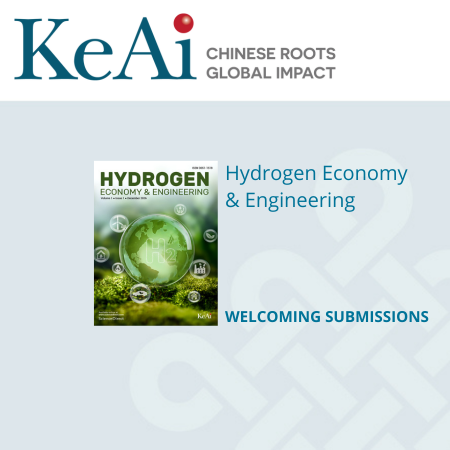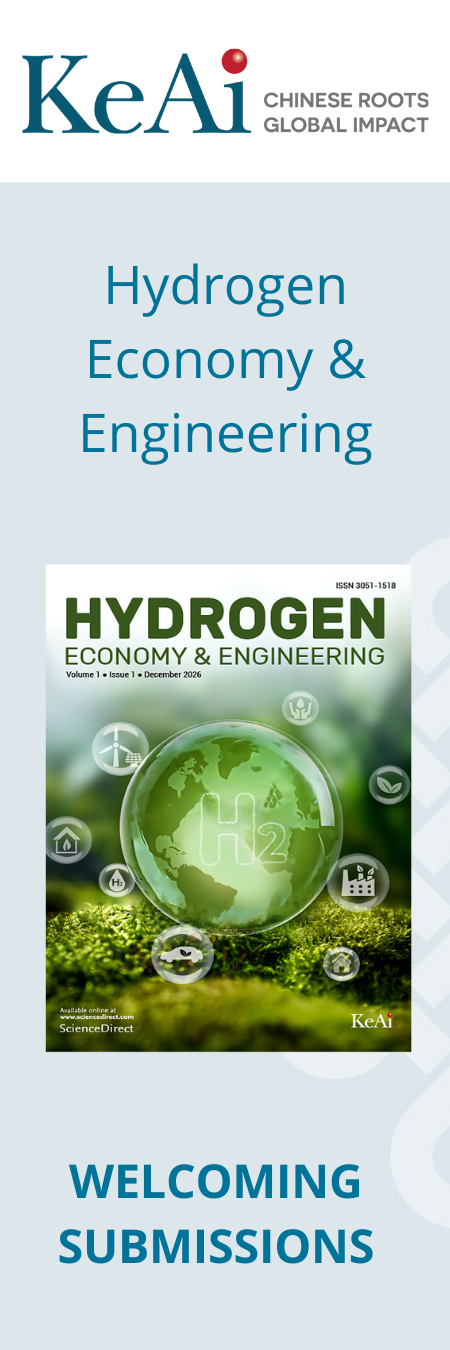Size-controlled flexible ionic polymer catalysts with enhanced mass transfer for sustainable ethyl methyl carbonate production
Available online 21 November 2025
Heterogeneous catalysts, particularly shaped catalysts, could be directly packed into continuous industrial reactors and offer advantages such as easy separation and environmental friendliness, making...
External intensifications for ionic liquids-based biorefinery in highly viscous systems
Available online 1 November 2025
Over the past two decades, ionic liquids (ILs) have become effective media for biomanufacturing, primarily enabling the dissolution and separation of lignocellulosic biomass (biomass hereafter), while...
From biomass to wealth: biomass-derived carbon dots for green synthesis, photoluminescence mechanisms, and multifunctional applications
Available online 31 October 2025
Biomass-derived carbon dots (BCDs) have garnered significant interest as multifunctional nanomaterials owing to their inherent structural flexibility, exceptional biocompatibility, and environmental...
Study on core-shell ionic liquid@metal-organic framework composites for direct oxidative carboxylation of CO2 and olefins under cocatalyst and solvent- free conditions
Available online 30 October 2025
The direct oxidative carboxylation reaction involves two sequential steps: epoxidation and cycloaddition. The specific catalyst for each step often leads to challenges in catalyst separation and recovery....
Precise capacity fade modeling of NCA/graphite lithium-ion batteries across a wide-temperature range using a pseudo-two-dimensional approach
Available online 17 October 2025
The development of accurate battery management systems (BMSs) for electric vehicles requires precise capacity fade modeling of lithium-ion batteries (LIBs) across the wide-temperature range. While existing...
Critical evaluation of feature importance assessment in FFNN-based models for predicting Kamlet-Taft parameters
September 2025
Mohan et al. developed a feed-forward neural network (FFNN) model to predict Kamlet-Taft parameters using quantum chemically derived features, achieving notable predictive accuracy. However, this study...
pH-tuneable simultaneous and selective dye wastewater remediation with digestate-derived biochar: adsorption behaviour, mechanistic insights and potential application
September 2025
The use of biochar for organic pollutants adsorption has emerged as a key component in wastewater remediation research. In this study, biochar prepared from digestate was subjected to nitric acid functionalization...
Optimization strategies and diagnostic techniques for water management in proton exchange membrane fuel cells
September 2025
Proton exchange membrane fuel cells (PEMFCs) are efficient and zero emission energy conversion technology with promising application prospects towards carbon neutrality. The PEMFC's performance is largely...
Exploring the chemical space of ionic liquids for CO2 dissolution through generative machine learning models
September 2025
For discovering uncharted chemical space of ionic liquids (ILs) for CO2 dissolution, a reliable generative framework combining re-balanced variational autoencoder (VAE), artificial neural network (ANN),...
Efficient removal and reusage of acid soluble oil in waste H2SO4 of isobutane alkylation by low-temperature carbonization process
September 2025
Waste H2SO4 from industrial isobutane alkylation, a hazardous thick liquid with a high concentration of acid soluble oil (ASO) impurities, poses challenges in the regeneration process. Herein, an innovative...
Synergistic enhancement of pollutant removal from high-salt wastewater using coagulation-flotation combined process
September 2025
Sufficient treatment of industrial organic wastewater with high salt and large amounts of suspended particulate matter remains a challenge worldwide. In this work, a novel coagulation-flotation combined...
Oxoammonium salt mediated conversion of cyclohexylamine toward cyclohexanone with water as the oxygen source
September 2025
Cyclohexylamine is a key byproduct during the production of cyclohexanone oxime, which is an important bulk chemical in material industry. Here we report a highly efficient approach to oxidize cyclohexylamine...
Screening HFC/HFO and ionic liquid for absorption refrigeration at the atomic scale by the prediction model of machine learning
September 2025
Absorption refrigeration is a highly effective method for utilizing renewable energy, as it can be driven by low-grade heat sources such as industrial waste heat, solar energy, and geothermal energy....
Synergistic coordination-regulated separation of nickel and cobalt from spent Ni(II) and Co(II) bearing choline chloride/ethylene glycol electrolyte: theoretical and experimental investigations
September 2025
Developing efficient and environmentally friendly metal recovery technologies from secondary resources is crucial for enhancing resource utilization and promoting environmental sustainability. However,...
Constructing potassium and hydroxyl co-doped dual-dipole structures on highly active 3D g-C3N4 surfaces for highly boosting photocatalytic hydrogen peroxide production efficiency in pure water
September 2025
Producing hydrogen peroxide (H2O2) through visible-light-driven photocatalytic oxygen reduction in pure water is crucial for sustainable ecological applications but poses significant challenges. It...
Establishing a generalized model for accurate prediction of higher heating values of substances with large ash fractions
September 2025
The higher heating value (HHV) of biomass is a crucial property for design calculations and numerical simulations in bioenergy utilization. However, existing models for HHV prediction faced challenges...
Evaluation of gum arabic and gelatine coacervated microcapsule morphology and core oil encapsulation efficiency by combining the spreading coefficient and two component surface energy theory
September 2025
Microcapsules containing various flavour/fragrance oils with different properties were fabricated using gelatine and gum arabic by complex coacervation. The surface properties (surface polarity and...
CO2 capture and conversion using graphene-based materials: a review on recent progresses and future outlooks
September 2025
Rapidly increasing global atmospheric carbon dioxide (CO2) concentration poses a serious threat to life on Earth. Conventional CO2 capture methodologies which rely on using sorbents to capture CO2 from...
OFC: Outside Front Cover
September 2025
Unsustainability of intercalation modification strategy for lithium aluminum layered hydroxide in long-term salt lake lithium extraction
Available online 24 September 2025
Interlayer intercalation has been considerably attempted to enhance the lithium adsorption of lithium/aluminum layered double hydroxides (Li/Al-LDHs) in salt lake brines. In view of the influence from...
Enhanced peroxymonosulfate activation by oxalic acid-activated lignin-derived carbon to degrade sulfamethoxazole: performance and mechanism
Available online 16 September 2025
In this study, lignin-derived porous carbon catalysts were synthesized using oxalic acid as an activator via high-temperature pyrolysis. Among the synthesized catalysts, OAL1-650 (OAL: (oxalic acid-activated...
Kinetic modeling of sulfate inhibition effects on growth dynamics of novel Thioalkalivibrio sp. isolates from Soap Lake, Washington
Available online 1 September 2025
Sulfate accumulation presents a major operational challenge in industrial systems treating reduced inorganic sulfur compounds (RISCs), inhibiting microbial activity and affecting process stability....


